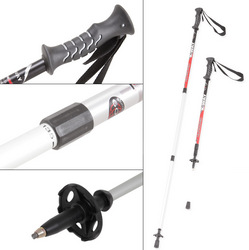I can’t emphasise how important your meals are during your climb up the highest freestanding mountain in the world. I didn’t really know what to expect from the meals on the mountain but they all serve the same menu. Eggs and sausages fried in oil with toast and tomatoes in the morning. Lunch is soup, saucy veg and fruit. Dinner is saucy veg, soup and either chicken or beef in more sauce. Every meal was variations of the same foods. There is always a fruit of some kind and now and then popcorn as a snack. It was delicious. Each and every bite. I forced myself to have a tea before a meal and a milo after a meal, even if I didn’t feel like anything more. I was, however, starving during the summit. They give you dinner before you go to bed and when you get up at 23:00 and start walking at 24:00 you only get sugary biscuits and tea. I would have loved 4 boiled eggs for the road and would have even had canned viennas.
For snacks on the road, I took a few things from home. Nut mix that we made ourselves… it included raisins, peanuts, seeds, dried berries and pecan nuts. I also took small Bar Ones (chocolate bars) and Wine Gums (glucose sweets) for each day. Super Cs (energy sweets) also did the trick. My mother was awesome and sent Droeë Wors along and that definitely saved my hunger pains during the summit. (Droeë Wors is a South African speciality). The one essential thing for me was a Rehidrat Sport in the morning and in the evening. This is a powder mixed with water that sportsmen and women drink to rehydrate after physical activity. It replenishes the minerals used during activity. So they say…
I can’t help but think that we would have done even better if we followed the Banting diet, which is a ketogenic diet with high fat and no carbs. I realised this only recently after reading about the diet and watching endless YouTube Videos. It seems that fat keeps you full for longer and that the slow release of energy is beneficial during a climb at altitude.
Watch this lecture by Tim Noakes, South Africa’s Dr Oz of the nutrition world.
It will be difficult to explain to mountain chefs that you want a ketogenic menu but ask them not to take up bread or sugar. Ask them to make eggs and bacon in butter – not oil. They might still do what they have been trained to do so it will be up to YOU not to eat bread or sugar.
Your snacks should be Biltong with fat (Beef Jerky) – South African Biltong is the best in the world by the way… include Droeë Wors (if you can’t find it take Italian sausages) and try not to take any sweets. You won’t need it. Focus on Almonds, Macadamia Nuts, Pecan Nuts, Pine Nuts and Pumpkin Seeds. Unfortunately travelling with fresh produce is problematic so vacuum seal EVERYTHING. Sniffer dogs are very sharp at the airport in Johannesburg!
I’m certainly not a nutrition expert and suggested the diet to my diabetic father. He has been following a normal “healthy” diet since he had a stroke in 1991. This consisted of low-fat everything, margarine, diet coke, brown bread, brown rice and no fat. His diabetes caused him to lose a toe and now has a permanent swollen lower leg at the age of 69. He did not really want to change his habits but watched a few videos and decided to cut out starch completely. He had already cut out sugar since learning of his diabetes a few years prior. On day 2 of his no starch diet, he saw an improvement in his energy levels. He wasn’t tired after breakfast and he didn’t feel like snacking during the day. Now he needs to up his fat intake! Butter butter butter!! Tim Noakes refers to a “chop” in his video… a Lamb Chop is the ultimate barbeque treat, especially with the fatty part. For years we have been taught that the fat is BAD. Now, at last, we can have as much of it as we want! It will take time for us to get used to the high-fat diet as we have been brainwashed for years that fat will cause death. What can we lose… according to the experts, we are all dying anyway, this may cause us to live a bit longer and to enjoy the food we cook… we don’t have to settle for low-fat anything!
Read more about the diet on www.realmealrevolution.com
Wine Gums: http://www.toffeecrumble.com/jellies.html


